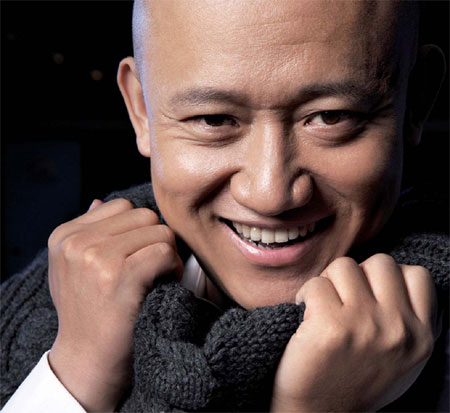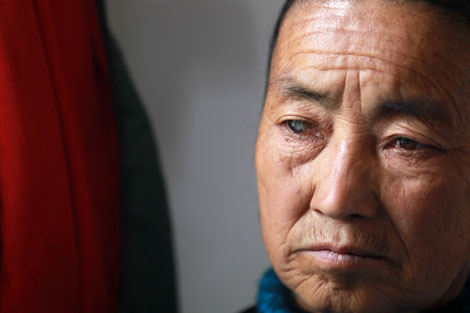The renaissance man
Updated: 2011-11-18 11:52
By Yao Jing (China Daily European Weekly)
|
|||||||||
|
 Beijing-based furniture king Cai Ming is venturing into music and publishing. [Provided to China Daily] |
Home decor mogul wants to make a cultural splash across international waters
Some successful Chinese entrepreneurs are willing to splash out 4 million yuan ($630,000, 457,000 euros) on a Ferrari to get their kicks, but for Cai Ming, CEO of Chinese furniture company Boloni Home Decor Group, music, food and dance are much more rewarding endeavours.
Cai says he does not care about brand names, and mixes and matches as he pleases. He may wear Chinese no-name shirt with a dark blue suit from Austrian fashion house Harmut Lang.
Cai says the only thing he thinks about is the design, which always relates to lifestyle. "I am keen on clothes that focus on the style and detail," he says.
His Beijing-based joint venture company has grown to become one of the largest furnishing operations in China.
Despite the success, his core interest is not just in consumer goods and he now wants to start a Chinese Renaissance. Cai is now trying to turn his cultural passions into other profitable businesses.
Last month the 42-year-old entrepreneur and stylist issued his autobiography, Seven Postures and 16 Styles, which expressed his views on fashion and shared his creative inspirations.
"Chinese people who go abroad always enjoy following tour groups to view popular scenic spots, but they do not know there are more valuable places, such as exhibitions. I wrote this book to help them open their minds."
Cai was born in Beijing in 1969 and studied engineering at Beihang University.
In 1994, he and his father set up an electronics company mainly producing rangehoods and gas cookers.
Success bred success and in 2001 he became the general manager of Boloni Home Dcor Group after establishing the joint venture company with an Italian firm.
In just a few years Boloni grew to become one of the largest furnishing companies in China.
By 2005, it had opened its 8,000 sq m Beijing flagship showroom, and now has nearly 200 retail outlets throughout China. It employs 3,500 staff and covers a factory area of more than 170,000 sq m.
Cai believes that it is only a matter of time before Chinese home decor companies surpass most of the global players.
"In 15 years Chinese businesses will squeeze out most competitors except for a few leading brands. The pace will only get quicker."
Cai insists he is selling a lifestyle, and not just products.
As well as running a furniture business, he has also set up a cultural platform for modern China at his 9 Dynasty Club, a very cool restaurant located in the Chaoyang district of Beijing.
While his old brands all focused on bringing Western innovation to China, 9 Dynasty's market is solely based on Chinese culture.
The facility the company is based in, on Beijing's North Fourth Ring Rd, seems more like a club than a showroom - in fact among its rooms are a fully operating teahouse, dinner hall, theater, and small scale cinema which shows only documentaries and art films.
The unique set-up aims to allow visitors to "experience" the brand.
Almost everywhere one will find things relating to great masterworks of Chinese culture - the ceiling of one of the largest banquet halls has a painting depicting stories from A Dream of Red Mansions, and in one corner is a drum used in the movie House of Flying Daggers.
But unlike other restaurants and clubs, every piece of furniture here has a price tag, and clients can have their favorite ones manufactured especially for them.
Cai also has a passion for music that has led to his collaboration with a British band. Next year he plans to launch an album of Chinese music. "When I travel abroad, I often hear excellent lounge music in bars or in cafes," he says.
"In some Armani stores, Arabian and African style music were both played. In a Chanel boutique, I could even hear the repeated rhythm of continuous submachine gun on the sound system.
"But no one is paying attention to Chinese music so I think it is time for me to join the music business and promote Chinese music."
Cai is certain that traditional Chinese songs will not fully cater to the international market so he plans to release two series of musical ideas, representing the yin and yang of life, or as he puts it: "night and day, coffee and tea, fast and slow".
His classic Chinese music CD will include kunqu opera works, such as the Peony Pavilion, and traditional Chinese erhu melodies.
"All of these will be created under the framework of Western pop music and traditional Chinese folk music," he says.
Cai is also working with his friend Chen Man, who is one of China's leading photographers, to make some visual products.
Although his art works will emphasize Chinese culture, he is quick to absorb Western ideas and elements into his works. Cai does not regard this process as conflict but as a fruitful fusion. "Modern and distinctive China should be looking into the future, and not be completely copying history," he says.
He says he likes to be the one who leads fashion and steers changes.
"If everyone wears a yellow shirt, I will definitely change into a pink one. How can I go along with the trend?" Cai says.
This trend-setting idea was used successfully in his furniture business when he proposed "life in the kitchen" as a revolutionary concept in domestic China.
He says by focusing on a consumer's inner feelings he aims to explore the lifestyle of his target customers.
When designing his furniture and household items he wants to include German quality and Italian design.
"Once I found I was familiar with Western designs and fond of Chinese culture, I realized I could do something new."
Cai says he discovered the lifestyle concept in 2002. He was visiting a home furnishing exhibition in Italy and when a booth worker gave him a brochure, he expected to see only pictures of furniture.
Instead, he saw pictures capturing the daily life of a woman, including images of her clothes, high heel shoes, books and the movies she watched.
"I discovered since it is not just about desks and chairs. It was about the whole atmosphere of someone's life and the needs of my clients came into my line of sight."
Shortly after his Italian experience, he came across an old lady promoting her tablecloths at another home furnishing exhibition in France.
"She used textures and patterns of the season's most popular clothes in her tablecloth designs, and this was such a good idea."
The two experiences greatly influenced Cai as he developed his fashion concepts, lifestyle and home decor.











